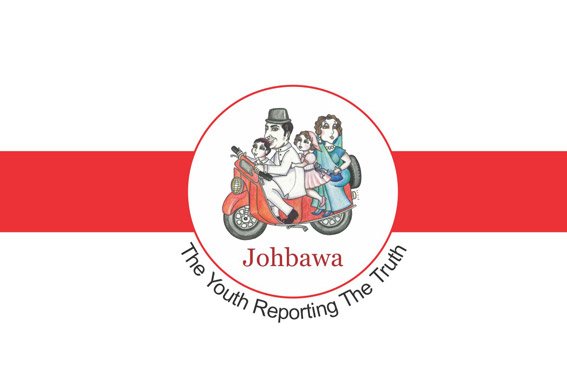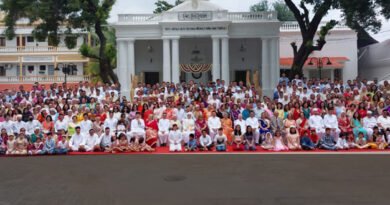Dating to Save Your Tiny Religion From Extinction
When Parsi Zoroastrians, having fled Persian persecution, arrived on Indian soil sometime between the 8th and 10th centuries, the story goes, an Indian ruler sent a cup full of milk. The intention, clearly, was to convey that India was filled to the brim. The Zoroastrian king inserted either sugar—or in some tellings, a ring—and sent the cup back to suggest that not only was there room for his people, but they would also enrich Indian society if permitted to settle.
Certain restrictions curbed the private and communal lives of the Zoroastrian asylum seekers, but they were largely allowed to thrive in India. Roughly a dozen centuries later, many Parsis have settled in the diaspora, where they’re encountering a different challenge: assimilation and a not-too-distant scenario in which, some worry, there will be no Zoroastrians left in the world. Sugar has a tendency to dissolve in milk.
This worry is often directed toward young Zoroastrians, whose minds—and perhaps more importantly, hearts—may determine the future of the religion. Decisions about dating and marriage can also be decisions about whether to stay within their community: Zoroastrianism is a patriarchal tradition, so the children of Zoroastrian women who marry outside the faith are not accepted, and even shunned, in many communities. Meanwhile, children of Zoroastrian men who intermarry are likelier to be accepted.
Unlike, say, Judaism, Christianity, and Islam, Zoroastrianism calls for individual rather than communal worship services in its houses of worship, called fire temples, and it prescribes “good thoughts, good words, good deeds” rather than the plethora of positive and negative rules that govern other religious traditions. Zoroastrianism does have holidays and rituals, and adherents go through an initiation rite, which some people compare to a bar or bat mitzvah, called “navjote.” Although it might appear to outsiders as though fire is worshipped in the temples, Zoroastrians say that fire is a symbol of the divine, due to its warmth and light, rather than the divinity itself. Parsis, the descendants of the Zoroastrians who fled Iran for India, represent the largest portion of the Zoroastrian population globally; the other portion lives in Iran.
Tracking demographics of the group in North America and worldwide isn’t easy. The religion, which adherents often refer to as the world’s first monotheistic tradition and which dates back to the 6th century B.C., is included in a category of “other world religions” in Pew Research Center reports, which also includes Sikhs, Baha’is, Taoists, Jains, Rastafarians, Confucians, and Druze. The lot, according to two 2015 surveys, account for just 0.3 percent of U.S. adults and 0.8 percent of the global population. The World Religion Database estimates there are 200,000 Zoroastrians worldwide, according to Pew; the Federation of Zoroastrian Associations of North America, or FEZANA, suggests that figure is too high. According to a study done by the organization’s journal in 2013, the world Zoroastrian population dropped from 124,953 in 2004 to 111,691 in 2012—a 10.6 percent decline. Although the North American Zoroastrian community actually grew during that period by 24.4 percent—numbering 20,847 in 2012—and by 33.5 percent in the United States, this population is relatively small compared to that of India, which saw a 12.4 percent decline from 69,601 in 2004 to 61,000 in 2012.
These figures, though, weren’t gathered as part of a formal demographic survey. “There’s no way really for us to compute how many Zoroastrians there are in the U.S. and in North America,” said Dinyar Patel, an assistant professor of history, including that of modern South Asia and Zoroastrianism, at the University of South Carolina. “Neither the U.S. nor the Canadian census does enumeration by religion.”
Patel, 34, who grew up in a Bakersfield, California, community with two other Parsi families, prioritized marrying within the faith, even though his parents didn’t pressure him to do so. “From the very beginning when I was starting to look out, I only looked within the community,” he said. “There are so many small things that make a big difference: celebrating the same holidays and traditions, going to the fire temple together, sharing the same idiosyncratic Parsi sense of humor, and of course having similar favorite foods,” he said.
He and his wife, who have been married for two years, are in a long distance U.S.-India marriage and do not have children yet. But when they do, Patel feels strongly committed to passing down his religion. “The only way this community will survive is through the personal decisions of each individual Zoroastrian,” he said. “While change is inevitable and the community needs to a bit more pragmatic on the issue of intermarriage, I still strongly believe that marrying within the community is the best possible safeguard for ensuring that we don’t get relegated to the history books in the next few generations.”
Patel’s wife, Parinaz, 27, agreed. “Even though we were from two different countries, we realized that we had a lot in common and that is, in large part, due to the fact that we share the same religious beliefs and values,” she said.
Dinyar and Parinaz, who grew up in India, met at a Zoroastrian community event in Dubai. “I really strongly think that if you make it a priority [to find a Zoroastrian spouse], and if you are sincere in it being a priority, you will find someone and make it work,” he said. He said he knows of middle-aged, intermarried Zoroastrians who still feel guilty that their kids aren’t connected to their religious heritage. “I find those experiences quite striking—that people who are 50 or 60, who have been married to their spouses for so long, still carry around such guilt,” he said.
For those who do want to date and marry within the religion, there aren’t necessarily many options. One approach is to visit a matchmaker: Roshan Rivetna, a Zoroastrian who lives in Illinois, keeps files on some 200 eligible Zoroastrians. Since she was profiled by the New York Times in 2009, “the situation has become worse,” she said, relying on the study by the FEZANA journal, where she used to be an editor; the rate of intermarriages, she estimates, has risen from 40 percent to 60 percent.
…
More on The Atlantic





